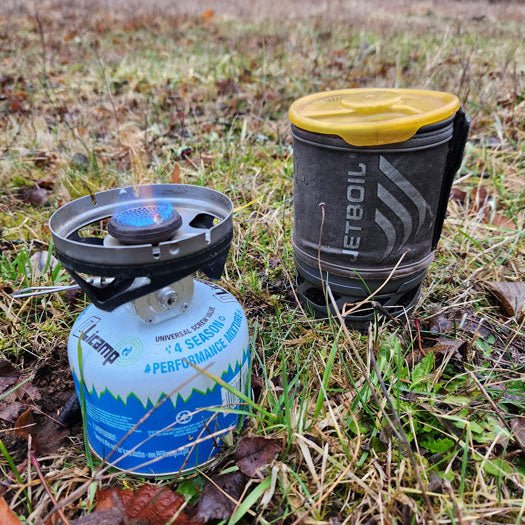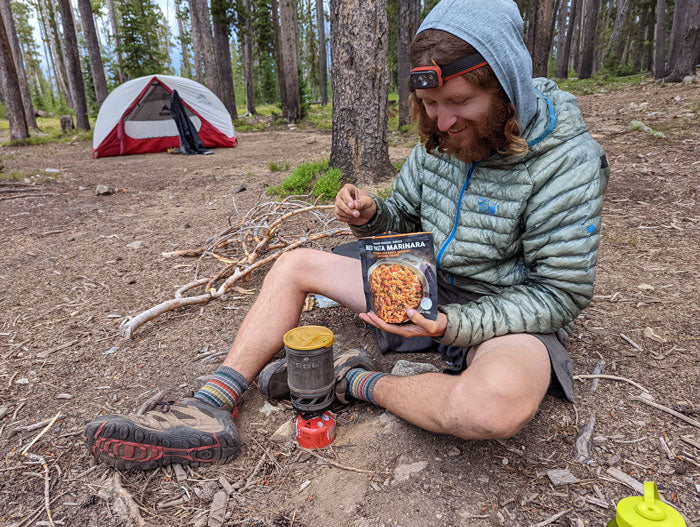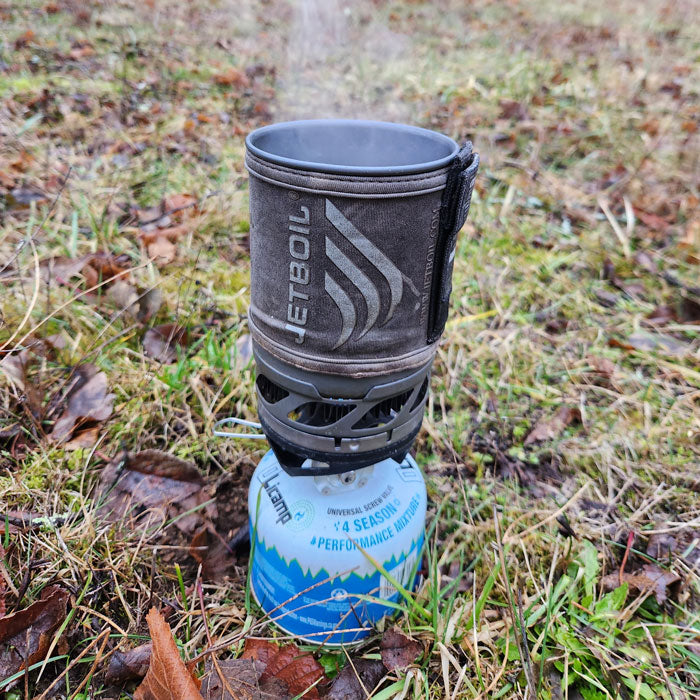
How to pick a camping stove for any adventure
Whether you’re headed out on a backpacking trip, spending a weekend in the forest with family, or fixing warm drinks in the parking lot after a day on the ski slopes, a stove is an important and often necessary part of any gear setup. A hot meal or drink can be a literal lifesaver after a long day on the trail; but it is important that you choose the right stove to take with you on your next trip. Some stoves are made for group camping, while others are better suited for carrying in a backpack; and while certain stoves might work great for a camping trip to the coast, the same stove might refuse to light on a high alpine climbing trip.
The key questions to consider when choosing a stove are:
- What kinds of trips will you be using this stove for?
- How many people will you be cooking for?
- What sorts of food will you be preparing?
- Will you be using your stove in cold weather or at high elevations?
In this article I’ll address why the answers to these questions are important. We’ll discuss the two most common types of stoves—large two-burner, and lightweight backpacking stoves—and the types of fuel they burn. I’ll also address stove systems, and finish with a few suggestions of products to look into. Read on to learn how to choose the perfect stove for your next big adventure!
 Two Burner Stoves and the Front Country Camper
Two Burner Stoves and the Front Country Camper
The first broad category of stove is the 2-burner stove—which, as the name describes, feature two separate burners. If you’re driving into a campsite or cooking out of the back of your car, these stoves will give you many of the comforts of home. 2-burner stoves are perfect for frying bacon or eggs or making pancakes in the morning; they are also ideal for cooking for large groups, as they are robust and efficient enough to support large cookpots. Most 2-burner stoves also allow you to adjust the heat output, making both quick boils and simmers possible. While it may be possible to backpack with a 2-burner stove, few people would choose to do so as they are both bulky and heavy, packing down to the size of a small suitcase.
When choosing between these stoves, the important factors to consider are size and weight, durability, and heat output. The specifications for a stove will usually include Max BTUs; the higher the BTUs, the more heat a stove can produce at a time and the more efficient cooking will be.

Propane vs. butane
Though most of these stoves burn propane, a few alternatives burn butane cannisters instead. Butane cannisters are smaller and lighter, and while they are usually limited to single burner stoves, they can be easier to find in stores and are preferred by people who are working with limited space constrictions. Both propane and butane cannisters are designed to be disposed of once they are empty, though refillable propane cannisters are becoming popular as a sustainable fuel alternative.
Solid Fuel Stoves
Solid fuel stoves are stoves that will burn any solid, combustible fuel including fuel pellets or cubes, sticks, charcoal, paper, or even trash. Solid fuel stoves range in size from tiny folding pocket stoves (good for emergency kits) to full-sized grills and firepits. Solid fuel stoves are fun to cook with—however, because there is no way to quickly turn on and off the flame, solid fuel stoves are not permitted for use during fire bans.

Backpacking Stoves
If you’re looking for a stove for your next hiking trip, you’ll probably want to bypass the 2-burner stoves and instead look at some backpacking options. Backpacking stoves feature a single burner and fold up small enough to fit inside the palm of your hand.
Liquid Fuel Stoves
Older-style backpacking stoves will burn liquid fuel, usually purchased in bulk and poured into a smaller metal cannister for transport and use. Liquid fuel stoves require a bit more effort to use, but they do have their advantages. Liquid fuel stoves require pumping the fuel cannister to build pressure, then priming the stove by lighting a bit of the liquid fuel on fire and waiting for the flames to burn down before lighting the stove itself.
The two major advantages to liquid fuel stoves are that they can burn a wide range of fuels and that they are reliable in extreme elevation and weather. While white gas (available at most camping stores) is the preferred fuel because it burns most cleanly, liquid fuel stoves can technically work by burning kerosene, diesel, or even gasoline if needed. If you’re planning a trip somewhere where fuel options might be limited (traveling abroad, for example) a liquid fuel stove might be the safest option.
Liquid fuel stoves are also the most reliable option for winter or high elevation camping. While most stoves operate on pre-pressurized fuel cannisters, liquid fuel stove cannisters are fitted with a pump. In cold weather or at high elevations, when air pressure drops, the pressure inside the fuel cannister might not be sufficient to operate many stoves; but with the fuel pump attached to liquid fuel cannisters, you can always increase the fuel pressure to accommodate varying air pressure.

Isobutane stoves (regulated vs. Non-regulated)
Though liquid fuel stoves used to be the preferred stove for backpacking, isobutane stoves (or cannister stoves) are quickly surpassing them in popularity due to their simplicity. While lighting a liquid fuel stove can be difficult, isobutane stoves simply need to be screwed onto a fuel cannister and they’re good to go. Isobutane fuel is also becoming more widely available, and the stoves and fuel are often smaller, lighter, and less expensive than liquid setups.
The biggest downsides to isobutane stoves are their limitations in simmer control and their unreliability under extreme camping conditions. Some isobutane stoves are built with a regulator; others are not. A regulator is built into the valve of the stove and maintains a consistent fuel supply independent of the air pressures inside and outside the fuel canister. This means that stoves with regulators will burn more efficiently and reliably at high elevations or in colder temperatures than stoves without regulators. Stoves with regulators will also allow for more temperature control if you’re trying to cook a more complex meal, while stoves without regulators will have less simmer control and can really only be relied on for boiling water efficiently. Even so, if you’re planning a winter high-elevation camping trip, liquid fuel stoves will always be more reliable than regulated isobutane stoves.

Isobutane stoves (regulated vs. Non-regulated)
Though liquid fuel stoves used to be the preferred stove for backpacking, isobutane stoves (or cannister stoves) are quickly surpassing them in popularity due to their simplicity. While lighting a liquid fuel stove can be difficult, isobutane stoves simply need to be screwed onto a fuel cannister and they’re good to go. Isobutane fuel is also becoming more widely available, and the stoves and fuel are often smaller, lighter, and less expensive than liquid setups.
The biggest downsides to isobutane stoves are their limitations in simmer control and their unreliability under extreme camping conditions. Some isobutane stoves are built with a regulator; others are not. A regulator is built into the valve of the stove and maintains a consistent fuel supply independent of the air pressures inside and outside the fuel canister. This means that stoves with regulators will burn more efficiently and reliably at high elevations or in colder temperatures than stoves without regulators. Stoves with regulators will also allow for more temperature control if you’re trying to cook a more complex meal, while stoves without regulators will have less simmer control and can really only be relied on for boiling water efficiently. Even so, if you’re planning a winter high-elevation camping trip, liquid fuel stoves will always be more reliable than regulated isobutane stoves.
Alcohol and Solid Fuel Stoves
There are a couple other types of backpacking stoves to quickly touch on: Alcohol Stoves, and Solid Fuel Stoves. Alcohol Stoves are incredibly simple and inexpensive, and burn denatured alcohol or ethanol, which can be found almost anywhere. Solid fuel stoves are also incredibly simple, and burn solid combustible such as wood pellets. Both of these stove options are lightweight and great for backpacking; however, they do not burn very hot and are not very efficient or easy to cook with.
Stove systems
Cannister stove systems are, in my opinion, the best option for backpacking. Stove systems feature a pot that locks onto the stove, and are designed to be the easiest to use and most efficient stoves on the market. They are built with wind screens, heat rings, and koozies and will bring water to a boil incredibly quickly. Most are slightly bigger, heavier, and more expensive than standalone cannister stoves; but since stove systems include a pot/bowl/cup, they save in the long run when building the rest of your cook kit. The pots are also usually designed to hold the stove/fuel can when not in use, so the whole system packs down to easily carry in a backpack.
Conclusion
With all that information in mind, here’s a quick synopsis of what you might look for when choosing a stove:
- For car camping or for cooking complicated meals: you’ll probably want a 2-burner propane stove or, if space is limited, a single-burner butane stove
- For general backpacking: look at cannister stoves (or cannister stove systems), or liquid fuel stoves
- For large group backpacking or high alpine or winter camping: look at liquid fuel stoves
The world of camping stoves is vast and varied, but by considering the weather and group size of your camping trip, the types of food you plan to cook, and the type of camping you will be doing, you should be able to narrow your options considerably. If you head into your local outdoor retailer, the staff should be more than happy to discuss stove options, and many stores will even show you how to use different stove systems. At Next Adventure, we even sell used stoves at a discounted price. Check out the following options for a few of my favorite camping stoves!

